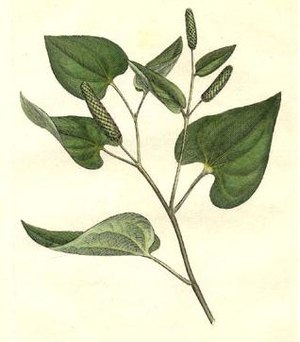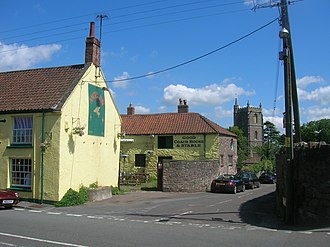Discover Your Roots
SIGN UPDiscover Your Roots
SIGN UPLong is a male name of Chinese origin, meaning "Dragon." The name is associated with strength, power, and mythical significance in Chinese culture. In addition to its symbolic meaning, Long is also used in various contexts such as measurements, places, and sports. In Chinese, "Lóng" is the pinyin transliteration of 龍 or 龙, representing the Chinese dragon, a revered creature in Chinese mythology. The name Long is also used as a surname in both Chinese and Western cultures. Furthermore, it has been featured in fictional characters in video games and holds significance in the domain of finance and computer programming. With its rich cultural connotations and diverse applications, Long embodies a sense of grandeur and significance.

Long John Silver is a fictional character and the main antagonist in the 1883 novel Treasure Island by Robert Louis Stevenson. The most colourful and complex character in the book, he continues to appear in popular culture. His missing leg and parrot, in particular, have greatly contributed to the image of the pirate in popular culture.Long John Silver is a cunning and opportunistic pirate who was quartermaster under the notorious Captain Flint. Stevenson's portrayal of Silver has greatly influenced the modern iconography of the pirate. Silver has a parrot, named Captain Flint in honor—or mockery—of his former captain, who generally perches on Silver's shoulder, and is known to chatter pirate or seafaring phrases like "Pieces of Eight", and "Stand by to go about".Despite being treacherous and willing to change sides to further his own interests, Silver possesses compensating virtues. He is physically courageous despite his disability and is wise enough to save his money. His character and persona have been adapted and expanded upon in various prequel and sequel novels, offering readers a deeper insight into the life and adventures of this iconic pirate figure.Long John Silver's character was partly inspired by the real-life William Henley, a writer and editor, as well as Stevenson's own observations of Henley's strength and masterfulness. Stevenson's stepson, Lloyd Osbourne, described Henley as a great, glowing, massive-shouldered fellow with a big red beard and a crutch; jovial,

Long hair has a significant cultural, biological, psychological, and historical significance. Long lustrous female hair is often considered attractive across cultures, and very long hair is a common subject of devotion for some individuals. From a biological standpoint, humans, horses, orangutans, and lions are among the few species that can grow their head hair or manes very long. The ability to grow very long hair may be a result of sexual selection, as long and healthy hair is a sign of fertility. Psychological significance of long hair may be adornment, a by-product of secondary natural selection once other body hair had largely been lost, or a result of Fisherian runaway sexual selection. Cultural meaning of long hair is evident in various ways of life, such as soldiering and religious discipline, where explicit rules regarding hair length are often observed. Additionally, long hair has a transferred meaning, with the traditional connotation of "long hair" in English being associated with someone artistically knowledgeable or wise. Hair length is usually categorized according to the part of the body where the bulk of the longest hair terminates, such as chin level, shoulder length, waist length, hip-length, thigh-length, knee-length, and ankle/floor length hair.

Long pepper (Piper longum), also known as Indian long pepper or pippali, is a flowering vine in the family Piperaceae. This plant is cultivated for its fruit, which is commonly dried and utilized as a spice and seasoning. Long pepper has a taste similar to, but sweeter and more pungent than, that of its close relative Piper nigrum. The fruit of the pepper consists of numerous minuscule fruits embedded in the surface of a flower spike. Like Piper nigrum, the fruits contain the compound piperine, contributing to their pungency. Historically, long pepper was widely used as a spice in ancient Greece and Rome. However, its popularity declined with the discovery of chili peppers and the availability of cheaper sources of black pepper. Today, long pepper is a rare ingredient in European cuisines but can still be found in Indian, Nepalese, North African, Indonesian, and Malaysian cooking. It is a main spice in dishes like nihari, a popular meat stew from India, and is available in Indian grocery stores labeled as pippali. Long pepper's etymology is derived from the Tamil word "pippali," and it is native to India.

Long Ashton is a village and civil parish in Somerset, England, falling within the unitary authority of North Somerset. It is home to a population of 6,044 and includes the hamlet of Yanley and the residential area of Leigh Woods. Long Ashton has a rich history dating back to Saxon times, with prehistoric and Roman artifacts discovered in the area. The village's parish church of All Saints, dating from about 1380, holds historical significance, with fine tombs and connections to poet Robert Southey. Agriculture has been a major occupation in the parish since early times, with several working farms still operating. The village boasts historic pubs such as The Angel Inn, dating back to 1495. Long Ashton was also home to the National Fruit and Cider Institute, which later became the Long Ashton Research Station until its closure in 2003. The village's governance is overseen by the parish council, which addresses local issues and evaluates planning applications. Notable historical figure Colonel Reginald Dyer spent his last years in Long Ashton, known for his role in the Jallianwala Bagh massacre.

The Long surname has diverse origins, with individuals in Ireland tracing their lineage to English, Scottish, and Norman descent. The Norman de Long and le Lung arrived in the 11th century with the Anglo-Norman conquest, establishing themselves in various locations. Irish Gaelic septs of O'Longain and O'Longaig also contributed to the name's origin, with one sept located in County Armagh and the majority in County Cork at Cannovee and Moviddy. Despite losing their lands in the 17th century upheavals, the name remains most prevalent in Munster, particularly County Cork. Additionally, the name's Swedish origin can be traced back to the 13th century, with variations like Långbäck and Langbekk. Notable individuals with the Long surname include artists, writers, actors, and musicians from various countries, such as Bernard Long, Catharine Long, Avon Long, Janice Long, and Justin Long. The Long surname is also associated with American political and English political dynasties.
All images displayed on this page are sourced from Wikipedia or Wikimedia Commons.We use these images under their respective Creative Commons or public domain licenses. Wherever applicable, author attributions and license information are provided. If you believe an image is used incorrectly or outside its license terms, please contact us so that we can review and correct the issue.